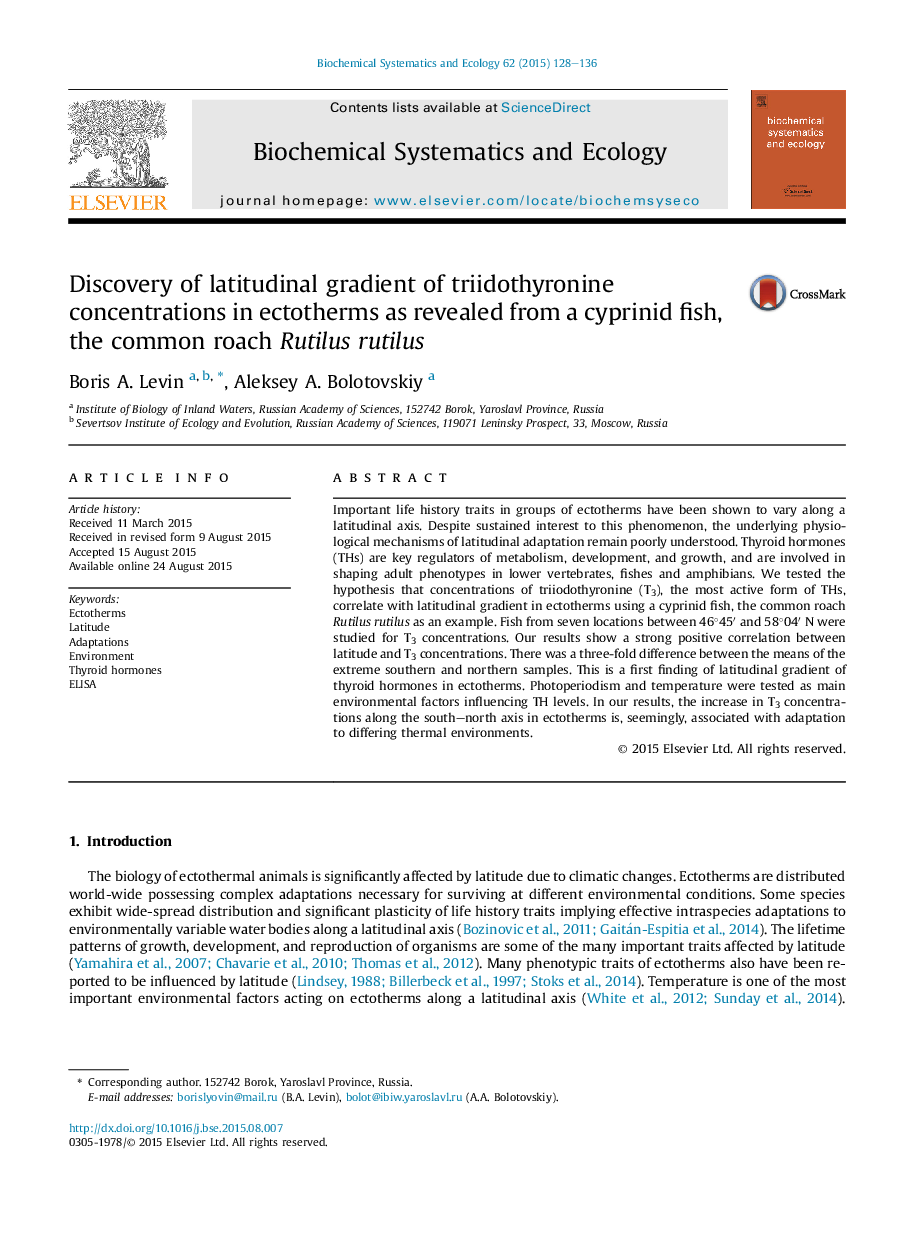| Article ID | Journal | Published Year | Pages | File Type |
|---|---|---|---|---|
| 1351279 | Biochemical Systematics and Ecology | 2015 | 9 Pages |
•Strong positive correlation between latitude and triidothyronine concentrations was detected in teleost fish.•There was a three-fold difference between the means of the extreme southern and northern samples.•Thyroid gradient is, seemingly, associated with thermal adaptations.
Important life history traits in groups of ectotherms have been shown to vary along a latitudinal axis. Despite sustained interest to this phenomenon, the underlying physiological mechanisms of latitudinal adaptation remain poorly understood. Thyroid hormones (THs) are key regulators of metabolism, development, and growth, and are involved in shaping adult phenotypes in lower vertebrates, fishes and amphibians. We tested the hypothesis that concentrations of triiodothyronine (T3), the most active form of THs, correlate with latitudinal gradient in ectotherms using a cyprinid fish, the common roach Rutilus rutilus as an example. Fish from seven locations between 46°45′ and 58°04′ N were studied for T3 concentrations. Our results show a strong positive correlation between latitude and T3 concentrations. There was a three-fold difference between the means of the extreme southern and northern samples. This is a first finding of latitudinal gradient of thyroid hormones in ectotherms. Photoperiodism and temperature were tested as main environmental factors influencing TH levels. In our results, the increase in T3 concentrations along the south–north axis in ectotherms is, seemingly, associated with adaptation to differing thermal environments.
